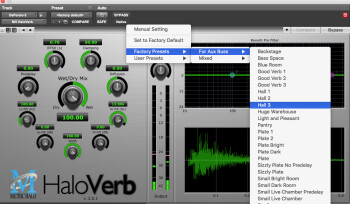My goal today is to try to make it even easier for you to choose your starting reverb preset...Yes, I know, it's starting to feel a bit like an obsession, but your choice in this regard is so important, that I can't insist enough on this.
Opposites attract

When it comes to reverb, there’s a concept I haven’t addressed so far even though it is crucial: complementarity. Mixing is, by definition, the quest for balance and it is precisely in this sense that we’ve been working the mix ever since we started this long journey. If you are talking about space, and hence reverb, this balance can be found by observing a simple rule based on the complementarity principle between dry and wet sounds. That is, if the source signal is brilliant, you’ll need a gloomy reverb and vice versa. A dense sound will benefit from a mild and ethereal reverb, whereas a strongly pronounced reverb will favor a soft instrument. In the same order of ideas, if a source seems too “tight, ” adding a complimentary reverb might help you open it up a bit.
You surely get the point, right? The idea is to counterbalance a highly pronounced characteristic of a given track by means of reverb.
But this complementarity concept isn’t limited only to a simple ying-yang reciprocity game. In fact, it can be completely the opposite for an acoustic track. Imagine you need to deal with recordings which already have a natural (or artificial) reverb. This situation is obviously far from being ideal but if you have no other choice, you have to make do with whatever you have at hand! So, in such cases, complementarity works the other way around. I’ll explain myself: It would be useless and even completely counterproductive to use a reverb that works counter to the one already present. Rather than trying to fight against the reverberated sound, it’s better to try to find an artificial reverb preset that can blend with it. In this case, the goal is not to balance things, but rather to get a realistic complement of a preexisting sound in order to win some control over it, which, in the end, will allow you to get the sought-after balance in a roundabout kind of way.
And that’s about it. By now you probably know everything you need to know to successfully choose the type of reverb that best fits your production, without it unnecessarily stealing the show. True, there are lots of parameters to consider. So many in fact, that it can seem overwhelming. But don’t stress out, with time and experience you’ll be able to play your cards better. So be patient…and practice! Again and again and again! That’s the true key to success, be it for mixing a song or anything else in life. Okay, and now the time has finally come to review the different parameters of a reverb effect in order to be able to adjust them better to the needs of your song, which is something we’ll tackle next week…!
